
The Pacific Voyages
of Rollo Beck
Collection of Oceanic Photographs
and Objects
The Early Years of the
Whitney Expedition
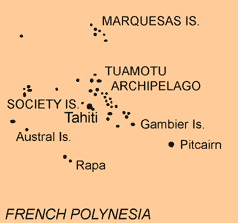

Map of
French Polynesia / The France
The Whitney Expedition began
in August of 1920 in French Polynesia where a seventy-five foot Tahitian-built,
motorized schooner named "The France," a former copra vessel, was
purchased for the project. The American and Polynesian crew spent the first
two years collecting throughout parts of Eastern Polynesia (the Society, Tuamotu,
and Marquesa Islands) using Papeete on the island of Tahiti as a home base.
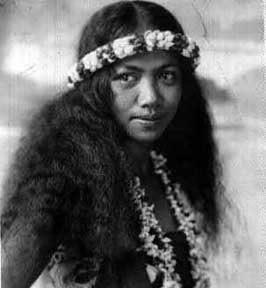
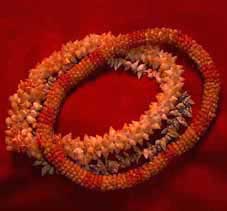
A Tahitian
girl wearing shell leis and a haku lei / 3 shell haku leis from our collection
CAS 1986-0002-0009 (top), 0084-0001 (middle), 0281-0031 (bottom)
In our collection there
are over thirty Oceanic leis and haku leis most of which are shell, like those
pictured above, while others are made of nuts or seeds.

A Tahitian
fisherman

A
canoe model from our collection
CAS 0477-0057
The photo above
depicts a Tahitian fisherman with his nets in a single outrigger canoe. The
model pictured is not identical to the Tahitian canoe but represents one of
many models of Oceanic sea craft from our collection.
Marine Subsistence
Marine subsistence
practices have long been an integral part of Polynesian culture. The archaeological
record indicates that early Polynesians brought domesticated plants and animals
with them but that they also relied heavily on marine protein sources. Shell and
reef fish collection as well as deep-sea line and net fishing were and still are
practiced throughout Oceania. Traditional fishing implements such as spears, bone
and shell fish hooks and lures, ground stone net weights, and sinkers, show an
extensive understanding of the marine environment. Certain articles were designed
for a specific catch, such as an octopus lure while others were designed for a
specific fishing zone, such as the spear, pictured below, for use in close range
inner tidal areas.
The Department of Anthropology at the California Academy of Sciences houses a number
of Oceanic fishing implements including a large collection of Hawaiian fish hooks.
A passage from Beck's field notes reads, "The natives of Takaroa, like those
of Manahi find their dogs useful when going on the reef fishing. I saw one dog
catch a fish about a foot long chasing it into the shallow water and killing it
then standing by till the owner came and picked it up."

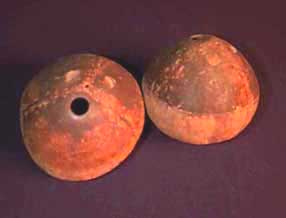
A Turei
Islander with coconut containers /containers from the collection
CAS 1984-0008-0069, 1984-0008-0070

Rapa
Islander in the Tuomotus with freshly pulled taro



Rapa
women with taro root ready to be pounded / Making poi

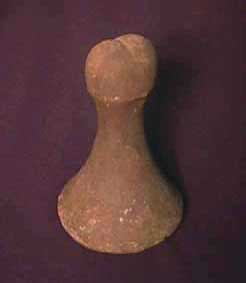
A Marquesan
man making poi / A poi pounder from the collection
CAS 0281-0032
As mentioned above, the earliest
Polynesian voyagers brought with them domesticated plants as well as agricultural
knowledge. One of the food plants they brought is Colocasia esculenta
commonly known as the taro plant. Taro is found in varieties suitable for both
wet and dry cultivation and is used as a starchy staple food called poi. Poi
is prepared by mashing the bulbous root, mixing it with water to form a thick
paste and allowing it to ferment for a few days. The leaves are cooked and used
as a dark green leafy vegetable. Just as Polynesians made specialized implements
for various fishing strategies, they also made tools specific to food preparation.
The ground stone poi pounder pictured above was collected by Beck in the Marquesas
and represents only one of a variety of shapes. The design and the shape vary
locally although they all serve the same function.

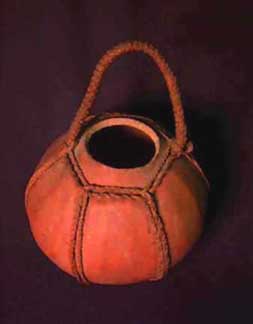

Rapa Islander
with gourd water vessel
CAS 1984-0008-0226
 Rollo
Beck continued
Rollo
Beck continued


















 Rollo
Beck continued
Rollo
Beck continued